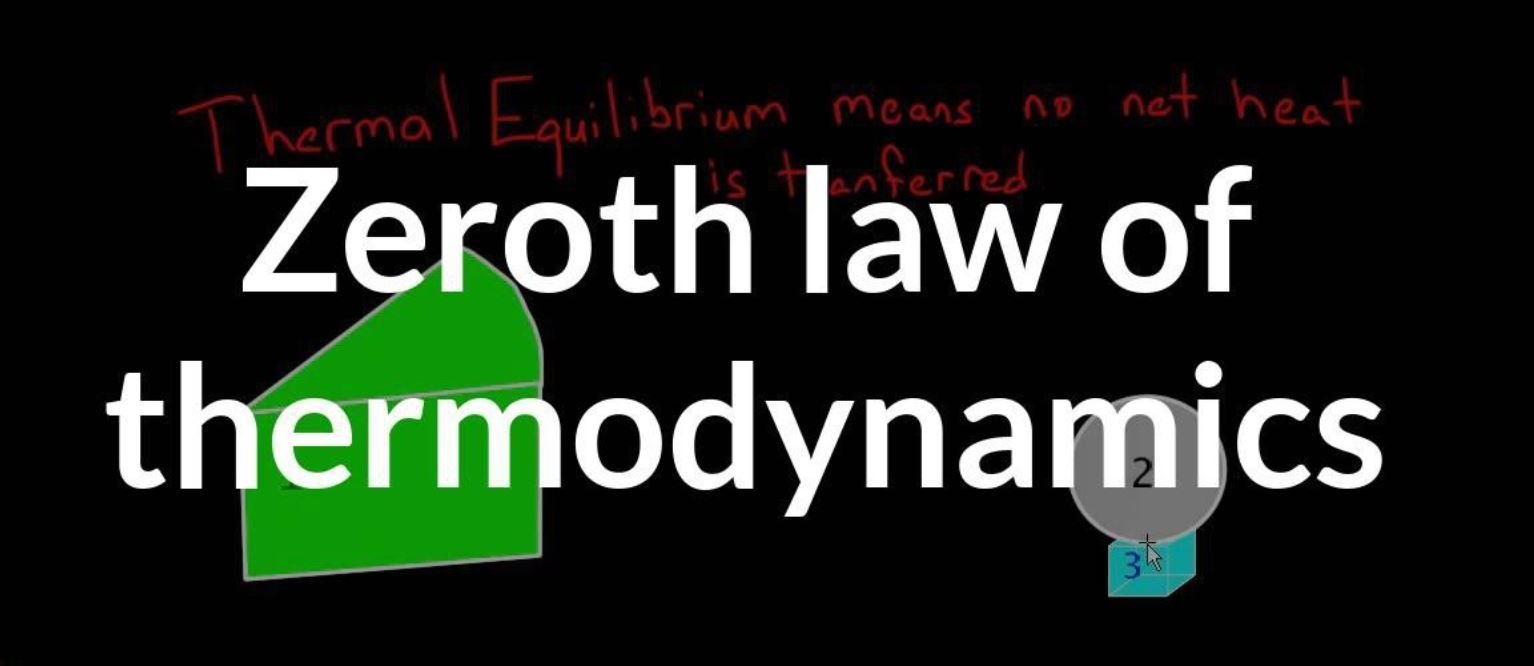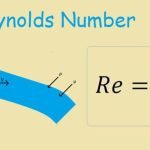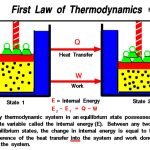The zeroth law of thermodynamics is stated as follows: If two thermodynamic systems are each in thermal equilibrium with a third, then the three are in thermal equilibrium with each other.
Fowler developed this law in the 1930s, years after the first, second, and third laws of thermodynamics had become widely accepted. It is called the zeroth law of thermodynamics because it is a more fundamental law than the other three laws.
What is Zeroth Law of Thermodynamics?
If two systems are connected through a heat-permeable wall and there is no change over time, they can be said to be in thermal balance. In other words; If the systems are not connected to each other in a way that allows heat transfer, it can be said that they are in a thermal equilibrium relationship. However, if they were connected by a heat-permeable wall, they would not be in thermal balance. Thermal balance between two systems is a transitional relationship.
Let’s assume that there are systems A and B with a wall between them that prevents heat transfer. Systems without heat transfer are known as adiabatic systems. The third system C is separated from systems A and B by a conductive or diathermic wall as shown in the figure.
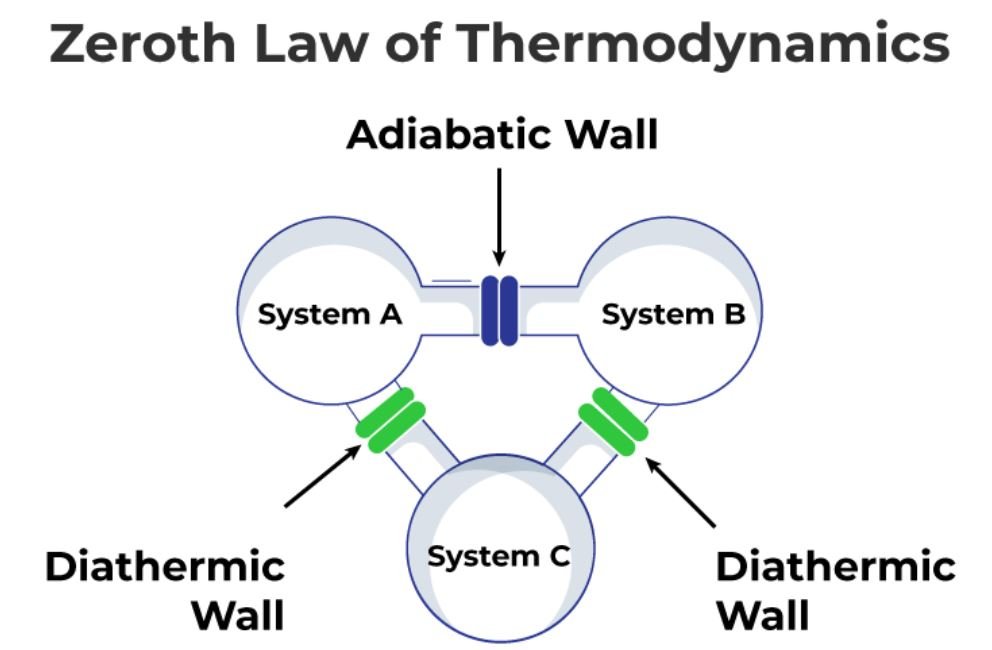
Since there will be energy flow between systems A and C, systems A and C will come to thermal equilibrium after a while. Likewise, energy will flow between systems B and C, and systems B and C will come to thermal equilibrium. In other words, systems A and B are both individually in thermal equilibrium with the third system C.
Since all three systems will be in thermal balance separately, there will be no energy transfer between systems A and B when the adiabatic wall between them is removed.
This indicates that systems A and B are also in thermal equilibrium with each other. This leads to an important law known as the zeroth law of thermodynamics, which is expressed as:
The Zeroth Law of Thermodynamics states that when two bodies are in thermal equilibrium with another third body, those two bodies are also in thermal equilibrium with each other.
According to the zeroth law of thermodynamics, if system A and system C are in thermal equilibrium, and system B and system C are also in equilibrium, then system A and system B are also in equilibrium.
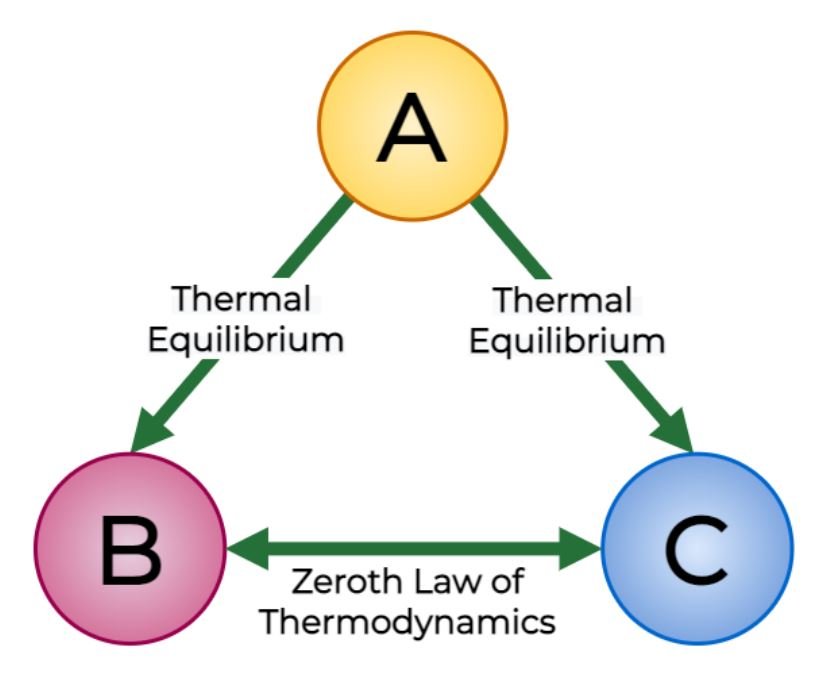
Thermal Equilibrium
The zeroth law of thermodynamics holds that temperature is a valuable measurement because it predicts whether heat will flow between objects. This is true regardless of how the elements interact. According to the radiation method of heat conduction, heat can move between two things even if they do not physically interact.
The zeroth law of thermodynamics says that if systems are in thermal equilibrium, no heat flow will occur.
Application of the Zeroth Law of Thermodynamics
- The law is crucial for the mathematical formulation of thermodynamics, or, to put it another way, for expressing the mathematical definition of temperature.
- The most common use of this concept is to compare the temperatures of different things.
- If we want to accurately measure temperature, we’ll need a reference body and a characteristic of that body that changes with temperature.
- The change in that characteristic could be interpreted as a temperature change. The chosen feature is referred to as a thermodynamic property.
- Nonetheless, Thermometers are the most prevalent application of the zeroth law of thermodynamics.
- Using a simple thermometer with mercury in a tube, we may witness the zeroth law in operation.
- Because the area of the tube remains constant as the temperature rises, the mercury expands.
- The height has grown as a result of this development.
- Now, the variation in the height of the mercury label indicates temperature changes and, in essence, aids us in measuring it.

